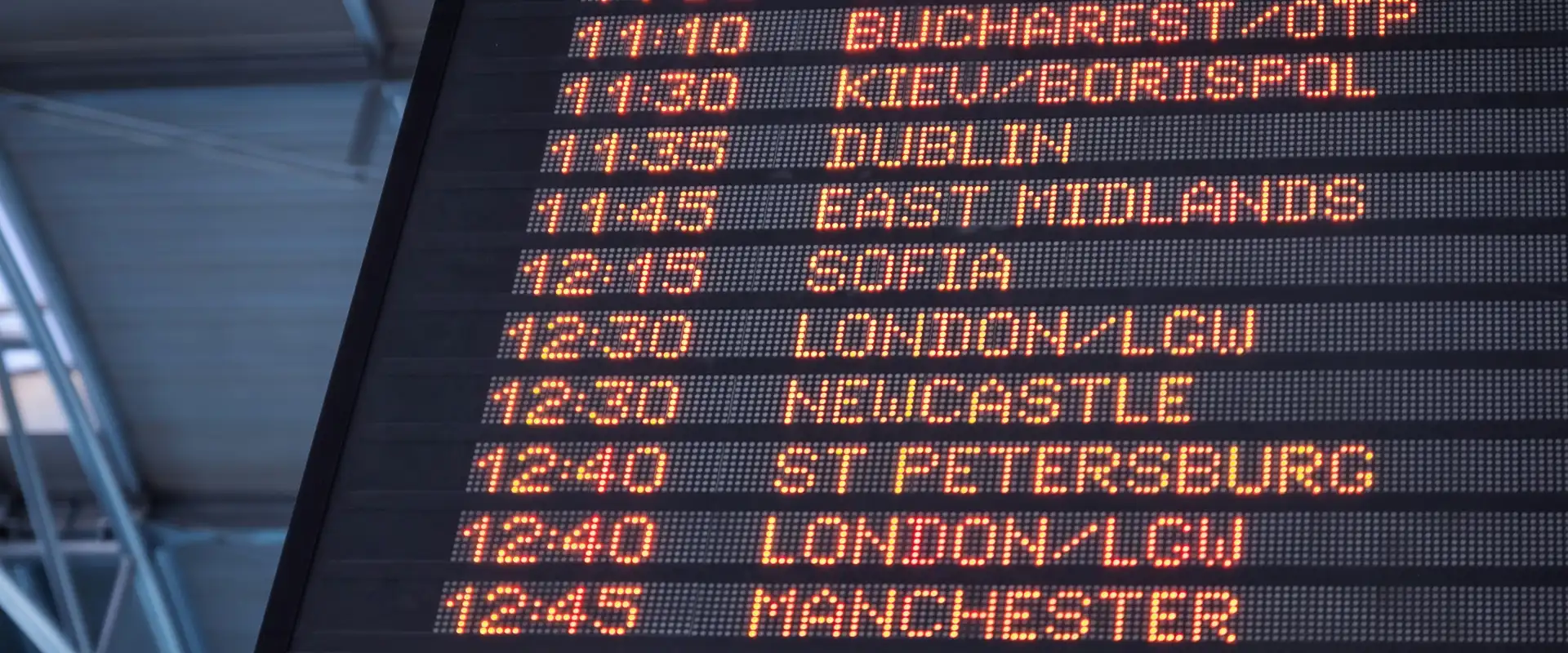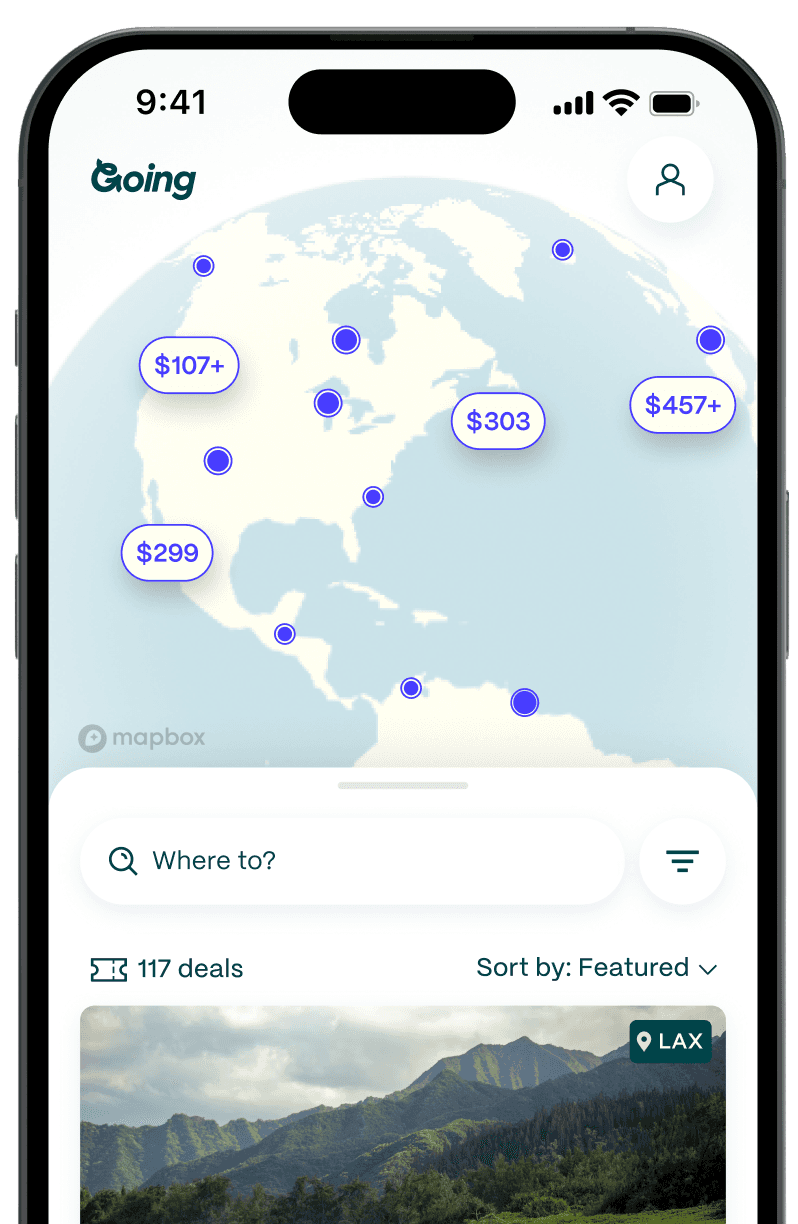
When Are Flights Cheapest? The Ultimate Timing Guide
Table of Contents
There is nothing worse for travelers than missing out on a flight deal. Plane rides are often the most expensive part of a journey, so finding cheap flights is key to lowering your travel expenses. Whether you’re planning a dream vacation or a last-minute getaway, understanding when flight prices drop can save you hundreds of dollars.
The truth is: Airline pricing is complex and often driven by several factors, including demand, supply, competitors’ fares, and even the day of the week. So, when do flight prices usually drop? In this guide, we’ll break down everything you need to know about airfare pricing, bust common myths, and share expert tips on when to book your next flight.
Summarize with ChatGPT | Perplexity | Claude | Google AI Mode | Grok
When do flight prices usually drop & why
The basics of airline pricing
While airfare pricing seems random, this complex process is actually influenced by many factors, including demand, supply, and dynamic pricing. Airlines use advanced algorithms to adjust ticket prices in real-time based on these factors, leading to frequent price fluctuations.
When demand is high—like during holidays or peak travel periods—or when there are limited flights on a route, prices increase. Conversely, if there are unsold seats or low demand, airlines may lower prices to fill them. To maximize revenue, airlines also categorize seats into fare classes, with lower-priced seats selling first. As these fill up, prices rise, but if a flight is underbooked close to departure, fares may drop to encourage last-minute bookings.
Factors influencing flight prices
Seasonality
High seasons—like summer, Christmas, and spring break—lead to price hikes due to increased demand. Conversely, shoulder seasons (spring and fall) often offer the lowest fares, as fewer travelers are flying.
Another interesting phenomenon is that popular beach destinations, such as Hawaii or the Caribbean, tend to have expensive airfare in winter because travelers seek warm getaways. Meanwhile, European flights are costlier in summer but cheaper from late September to early November.
Events and holidays
Major holidays and events significantly impact flight prices. So, travelers can expect airfare spikes around Christmas, Thanksgiving, and major global events like the Olympics or World Cup.
Airline competition
On routes served by multiple carriers—especially when low-cost airlines are involved—prices tend to be lower as airlines compete for passengers. On the other hand, routes dominated by a single carrier or those operating from smaller regional airports with limited options often have consistently high fares.
Amenities also impact pricing, as full-service airlines that provide in-flight meals, entertainment, and more generous baggage policies usually charge higher fares than low-cost carriers. Budget airlines may offer cheaper base fares, but additional fees for seat selection, baggage, and onboard services can add up.
Flight price drops: myths vs. reality
Do flight prices go down as it gets closer?
Not generally. While some believe waiting until the last minute results in cheaper fares, this is largely a myth. In fact, airlines tend to increase prices as the departure date approaches, especially for popular routes.
While a few airlines offer last-minute discounts on flights that aren’t selling well, this tactic is mostly seen on domestic flights. If you’re flexible, you might find a deal, but we don’t recommend relying on last-minute drops.
Do flight prices go up the more you search?
There’s a popular belief that airlines track your searches and increase prices, but there’s no concrete evidence that searching multiple times on the same device causes prices to rise.
What days do flight prices go down?
There’s no universal best day to book a flight, but it’s often cheapest to fly on Tuesdays and Wednesdays because they’re less popular travel days.
Are last-minute deals still a thing?
Last-minute deals exist, but they’re much rarer than before. In the past, airlines slashed prices to fill empty seats, but today, pricing algorithms often increase fares as the departure date nears. If you need a last-minute deal, look for budget airlines and check red-eye flights.
Also, flexible travelers can take advantage of mistake fares and last-minute deals found by Going—signing up for a Premium membership helps you catch these rare opportunities.
Do flight prices go down at night?
Flight prices don’t necessarily drop at night, but some airlines update their fares during off-peak hours, typically late at night or early morning. Actually, prices fluctuate more based on demand than the time of day.

When will airline prices drop & when to book
Best time to book a flight
While there are general trends for booking flights, like securing domestic tickets 1 to 3 months in advance and international flights 2 to 8 months out, there's no guaranteed formula for finding the cheapest fares. The idea that flights are always cheaper when booked on a Tuesday or precisely 70 days before departure is a myth.
That said, booking early often provides more options, especially during peak seasons like summer and major holidays when demand is high. However, being flexible with your travel dates, monitoring prices regularly, and using fare alert tools like Going can be more effective than relying on "rules" for timing.
When do international flight prices drop?
International fares fluctuate more than domestic flights. Generally, prices drop around three months before departure, but early-bird deals are available up to a year ahead for peak travel periods. Off-peak travel seasons—like Europe in late fall or Asia in early spring—often have the best deals.
When do domestic flight prices go down?
Domestic flight prices tend to drop 1 to 3 months before departure, especially for non-peak travel times (more like 3 to 5 months for peak travel seasons). However, waiting too long can backfire, as last-minute fares usually increase.
Best strategies to save money on flights
Track prices with online tools and apps
Going
Unlike traditional search engines, Going specializes in discovering deep discounts that aren't widely advertised. With our travel memberships, you'll receive real-time alerts with personalized deals from your preferred departure airports, even for mistake fares—rare opportunities that can save you hundreds of dollars.
Download the Going app and start receiving flight deals now!
Skyscanner
Skyscanner is a versatile search engine that compares prices from airlines, online travel agencies, and booking platforms worldwide. It offers an intuitive “Everywhere” search feature, ideal for travelers who are flexible on their destination and just want the cheapest possible option.
Google Flights
Google Flights is a favorite among frequent travelers for its speed, comprehensive search results, and easy-to-use interface. You can search for flights using flexible dates, explore alternate airports, and see fare trends over time. Its “Explore” feature is also a fantastic way to discover deals when your travel dates and destinations are flexible.
Momondo
Momondo is a metasearch engine that scans airlines, booking sites, and lesser-known travel agencies to present a wide range of pricing options. This site also displays a “Mix & Match” option, which allows you to combine separate one-way tickets for potentially cheaper roundtrip fares.
Stay flexible with dates and destinations
Flexibility is one of the most effective strategies to find cheap flights. If you’re open to adjusting your travel dates by a day or two, you can often find lower fares. Additionally, consider flying into alternative airports near your destination. Major cities often have multiple airports, and choosing a smaller or secondary airport can save you money. For example, flying into Oakland instead of San Francisco or Gatwick instead of Heathrow can sometimes result in lower fares.
Take advantage of airline sales and promotions
Airlines regularly launch sales and promotions to fill unsold seats. These flash sales can provide significant discounts, but they typically last only a few days.
Joining loyalty programs also has benefits beyond discounts. Members often receive exclusive access to sales before they're made public, as well as early seat selection and additional perks.
Subscribe to newsletters and blogs
Subscribing to travel deal newsletters is a smart way to access exclusive deals and mistake fares before they become widely known. Travel blogs can also be useful for discovering insider tips on saving money, navigating complex airline policies, and understanding when and how to book flights.
Look out for hidden fees
Low-cost carriers often attract travelers with seemingly unbeatable fares, but these prices can quickly increase with hidden fees. Unexpected charges for checked baggage, carry-ons, seat selection, printing boarding passes, and even in-flight refreshments can add up, making a "cheap" flight more expensive than a legacy carrier one.
Before booking, review the airline's fee structure carefully. If traveling with a budget airline, consider whether the combined cost of all necessary add-ons still makes it the most affordable option.
Compare different flight options and their amenities
Not all flights are created equal, even at similar price points. Comparing amenities like legroom, baggage allowances, in-flight entertainment, and meal services can help you choose the most valuable option.
Tools like SeatGuru and Skytrax can help you compare the perks of each airline, along with its seat configurations, and in-flight services. For example, for long-haul flights, a slightly more expensive fare with added comfort and included meals might be a smart investment.
Consider taking layovers
Nonstop flights are convenient, but they’re usually more expensive than those with layovers. Opting for a flight with a layover is often cheaper. If you're willing to handle a few hours of downtime at a connecting airport, the cost difference can be substantial.

Stay alert for price drops with Going
Don’t miss out on the next flight deal! With Going, you can stay on top of airfare fluctuations and be the first to know about price drops, including rare mistake fares that can save you hundreds of dollars. Unlike traditional search engines, we send our members alerts tailored to their preferences, ensuring that they are always in the loop on the best deals available.
Frequently asked questions
Why are flights so expensive in December?
How many days before a flight is the best price?
How early should I buy plane tickets?
How do I get the cheapest flight tickets?
Last updated November 3, 2025
Articles you might like
View All
10 Cheap Flight Hacks So Good, You'll Never Pay Full Price Again
Oct 31, 2025
5 min read

How Far Out Can You Book a Flight Without Getting Burned? (2025 Guide)
Oct 31, 2025
5 min read

When Is the Best Time to Book a Flight? Forget What You've Heard
Oct 31, 2025
8 min read





